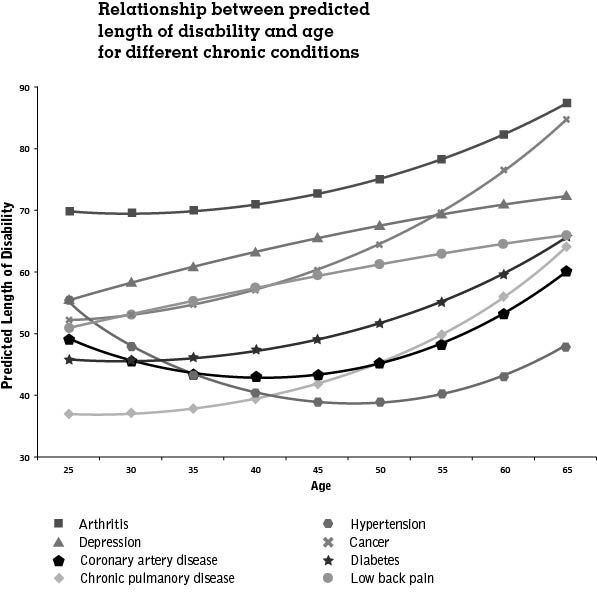As workers with chronic conditions grow older, their time off on disability tends to grow longer. The longest duration of work absence is seen among people with arthritis, depression and cancer, a study by an Institute for Work & Health (IWH) associate scientist has found.
The study, conducted by Dr. Arif Jetha and a research team at the Hopkinton, Mass.-based Liberty Mutual Research Institute for Safety (LMRIS), examined short-term disability (STD) and long-term disability (LTD) claims to understand patterns of leave duration for workers with one of eight different chronic conditions.
On average, duration of disability leave was 76.6 days for people with arthritis, 63.2 for depression and 64.9 for cancer—the longest durations among the eight conditions studied. Hypertension was linked to the shortest disability duration at 41.5 days on average. The study was published in the May 2016 issue of the Journal of Occupational and Environmental Medicine (doi: 10.1097/JOM.0000000000000702).

Although arthritis, cancer and depression are different clinically, they can share factors in common, including pain, fatigue and activity limitations, notes Jetha. These conditions could also be characterized as invisible—they don’t have easily identifiable signs or symptoms—and that makes early disclosure and accessing job accommodation challenging.
The study found that, for most chronic conditions, the relationship between age and the number of days on leave tends to be linear: the older the workers, the longer they are off on disability leave when they have a chronic condition. The two exceptions to that linear relationship are found for cancer and hypertension.
With cancer, the length of disability increases little from ages 25 to 45, but after 45, it increases at a sharper rate. With hypertension, there’s a gentle U-shape relationship. That means disability leaves are longer among the youngest workers, shorter as workers approach middle age, then longer again as workers approach the age of 65. For young adults and older adults, hypertension may have severe underlying causes such as kidney, endocrine or heart disease, which are challenging to manage,
Jetha says.
The team analyzed data from a large U.S. insurance provider that offers disability coverage to workers in a wide range of industries. About 40,000 STD and LTD (non-work-related) claims from 2008 to 2012 were tracked until claims were closed, up to a maximum of one year.